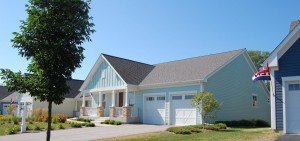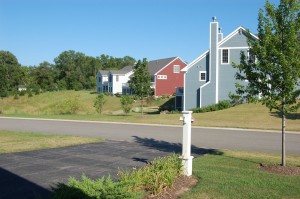 You may have heard the words “planned community” or “planned urban development (PUD),” but what do those words mean to a home buyer? In the simplest sense they indicate that, when the property was zoned, certain amenities were built into the plan. The land wasn’t just cut up into as many home sites as possible. Instead, space was left for common areas – for parks, natural habitats, green belts, perhaps a stand of old trees. A “planned community” also means that the development has certain guidelines and standards which typically are higher than the normal zoning code. Perhaps all the architecture is required to be the same “style”. Maybe all roofs must be the same color. Some PUDs prevent the permanent parking of commercial vehicles – boats or campers, as examples, or limit the numbers of pets homeowners can shelter.
You may have heard the words “planned community” or “planned urban development (PUD),” but what do those words mean to a home buyer? In the simplest sense they indicate that, when the property was zoned, certain amenities were built into the plan. The land wasn’t just cut up into as many home sites as possible. Instead, space was left for common areas – for parks, natural habitats, green belts, perhaps a stand of old trees. A “planned community” also means that the development has certain guidelines and standards which typically are higher than the normal zoning code. Perhaps all the architecture is required to be the same “style”. Maybe all roofs must be the same color. Some PUDs prevent the permanent parking of commercial vehicles – boats or campers, as examples, or limit the numbers of pets homeowners can shelter.
Lifestyle, convenience and aesthetics draw people to planned development. Our Newport Cove community on the Chain O’ Lakes is one example. Homeowners say they have moved there for the waterfront lifestyle and the quality environment. “We want a place where our friends, our kids and grandkids will want to visit,” is something we hear time and again.
Housing choices
Planned communities typically offer variety in the size and type of houses. Maintenance-free smaller houses, like Newport Cove’s Cottages, meet the need of empty nesters or second-home buyers. Custom-designed larger homes satisfy a growing family. Houses built using universal design or aging-in-place principles assure a home that will meet owners’ changing needs. What ties these housing choices together is not uniformity, but rather attention to details that cultivate community. Front porches and shared common grounds allow neighbors to know one another and congregate as they see fit.
Land planning is important in a PUD. Attractive natural landscapes with open spaces are increasingly appealing to buyers. Carefully constructed street scenes and walking paths provide views of the natural environments. For example, Newport Cove’s acres of wild flowers and natural grasses will add more and more interest to the environment as the years go on.
If you were planning a community what would you want to include?

